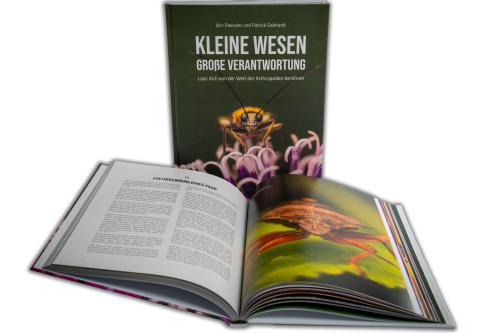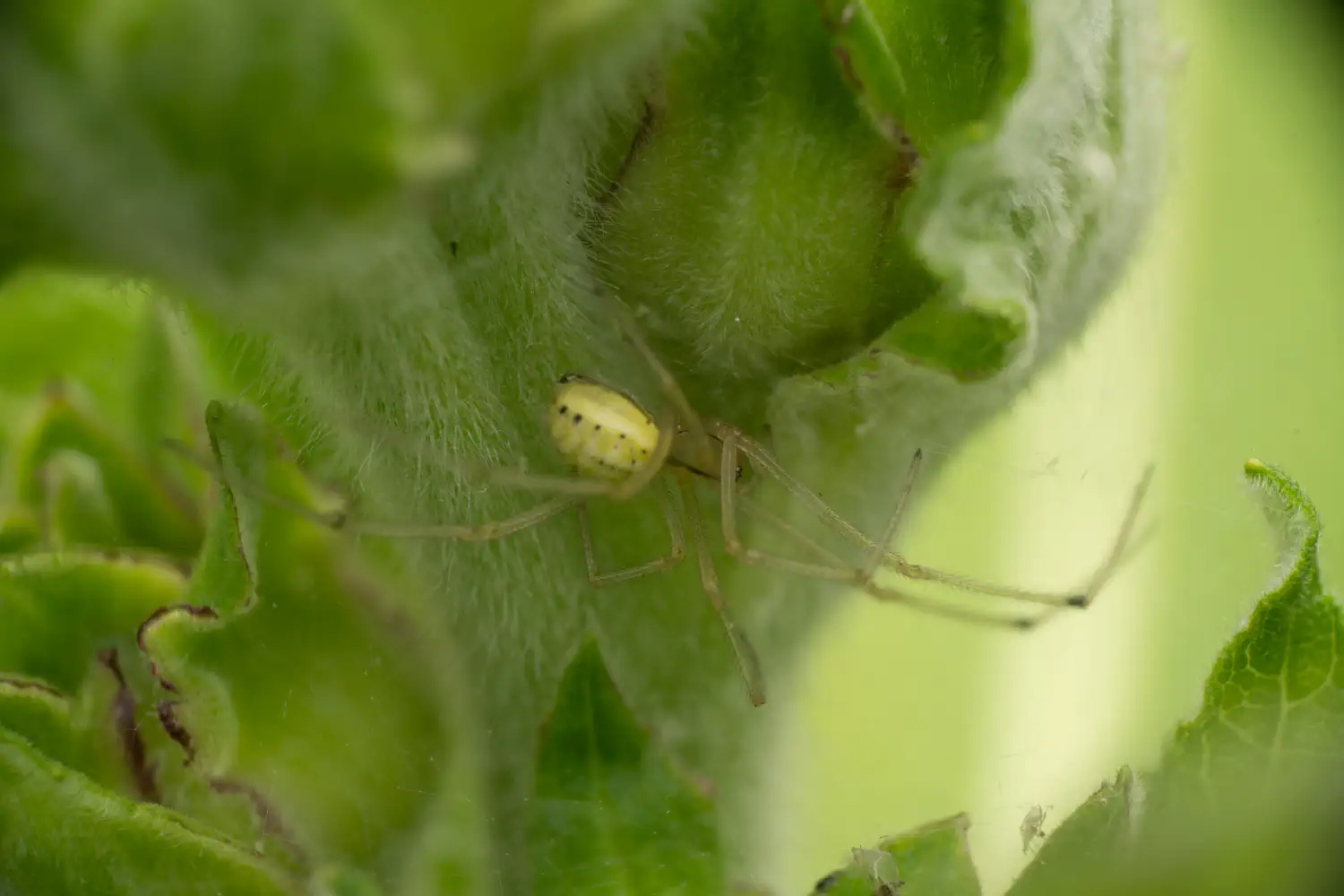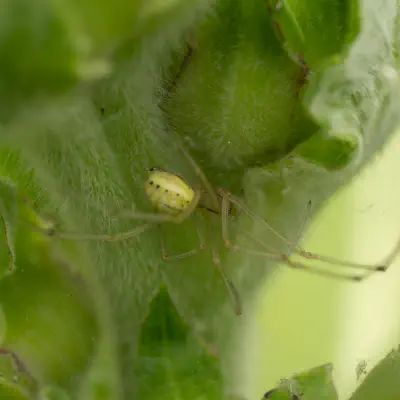Comb-footed Spiders Lat. “Theridiidae“
Theridiidae is a large family of spiders, also known as the tangle-web spiders, cobweb spiders and comb-footed spiders. Members of Theridiidae are the most common arthropods found in human dwellings throughout the world. The diverse, globally distributed family includes over 2,200 species in over 100 genera of three-dimensional space-web-builders. Theridiid spiders are entelegyne (have a genital plate in the female) araneomorph ecribellate (use sticky capture silk instead of woolly silk) spiders that often build tangle space…
Hierarchy
Webs
They often build tangle space webs, hence the common name, but Theridiidae has a large diversity of spider web forms. Many trap ants and other ground dwelling insects using elastic, sticky silk trap lines leading to the soil surface. Webs remain in place for extended periods and are expanded and repaired, but no regular pattern of web replacement has been observed. The well studied kleptoparasitic members of Argyrodinae (Argyrodes, Faiditus, and Neospintharus) live in the webs of larger spiders and pilfer small prey caught by their host’s web. They eat prey killed by the host spider, consume silk from the host web, and sometimes attack and eat the host itself. Theridiid gumfoot-webs consist of frame lines that anchor them to surroundings and of support threads, which possess viscid silk. These can either have a central retreat (Achaearanea-type) or a peripheral retreat (Latrodectus-type). Building gum-foot lines is a unique, stereotyped behaviour, and is likely homologous for Theridiidae and its sister family Nesticidae. Among webs without gumfooted lines, some contain viscid silk (Theridion-type) and some that are sheet-like, which do not contain viscid silk (Coleosoma-type). However, there are many undescribed web forms.
Genera
The largest genus is Theridion with over 600 species, but it is not monophyletic. Parasteatoda, previously Achaearanea, is another large genus that includes the North American common house spider. As of April 2019, the World Spider Catalog accepts the following genera:
About 35 extinct genera have also been placed in the family. The oldest known stem-group member of the family is Cretotheridion from the Cenomanian aged Burmese amber of Myanmar.
See also
List of Theridiidae species
Further reading
Agnarsson I. 2006c. Phylogenetic placement of Echinotheridion (Araneae: Theridiidae) – do male sexual organ removal, emasculation, and sexual cannibalism in Echinotheridion and Tidarren represent evolutionary replicas? Invertebrate Systematics 20: 415–429. PDF Archived 2007-09-27 at the Wayback Machine Agnarsson I. 2004. Morphological phylogeny of cobweb spiders and their relatives (Araneae, Araneoidea, Theridiidae). Zoological Journal of the Linnean Society 141: 447–626. PDF Archived 2007-01-01 at the Wayback Machine Arnedo, M.A., Coddington, J., Agnarsson, I. & Gillespie, R.G. (2004). From a comb to a tree: phylogenetic relationships of the comb-footed spiders (Araneae, Theridiidae) inferred from nuclear and mitochondrial genes. Molecular Phylogenetics and Evolution 31:225–245. PDF Arnedo MA, Agnarsson I, Gillespie RG. In Press. Molecular insights into the phylogenetic structure of the spider genus Theridion (Araneae, Theridiidae) and the origin of the Hawaiian Theridion-like fauna. Zoologica Scripta. Aviles, L., Maddison, W.P. and Agnarsson, I. 2006. A new independently derived social spider with explosive colony proliferation and a female size dimorphism. Biotropica, 38: 743–753. Gillespie, R.G. and Tabashnik, B.E. 1994. Foraging Behavior of the Hawaiian Happy Face Spider (Araneae, Theridiidae). Annals of the Entomological Society of America, 87: 815–822. Oxford, G.S. and Gillespie, R.G. 1996. Genetics of a colour polymorphism in Theridion grallator (Araneae: Theridiidae), the Hawaiian happy-face spider, from greater Maui. Heredity, 76: 238–248.
External links
Platnick, N.I. 2006. World Spider Catalog Key to several Theridiidae genera Tree of Life: Theridiidae Theridiidae research
Ancestry Graph
Further Information
„Comb-footed Spiders“ on wikipedia.org
„Comb-footed Spiders“ on iNaturalist.org
Copyright

This article uses material from the Wikipedia article Theridiidae the free encyclopedia Wikipedia which is released under Creative Commons Attribution-ShareAlike 4.0 International License). On Wikipedia a list of authors is available.

Little beings in print
Order our calendars and books today!
Compiled with love. Printed sustainably. Experience our little beings even more vividly in print. All our publications are available for a small donation.


